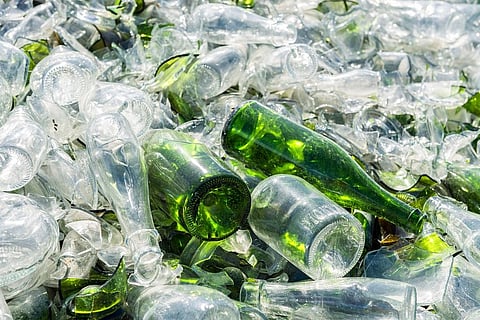Recycled waste glass can help solve sand shortages
The rising demand for construction sand and its declining reserves have made it necessary to produce a sustainable and affordable alternative, which will aid in the shift to a circular economy. Waste glass — a byproduct of natural sand — can be an option to natural sand. Crushed waste glass may show geotechnical behaviour (properties) comparable to the latter.
Using crushed waste glass as an alternative to traditional sand could offer a double-duty benefit by addressing the geo-environmental challenges of natural sand depletion and disposal of ever-increasing waste glass.
Natural aggregates, such as manufactured sand and gravel, has a wide range of applications. At present, the construction industry is the world’s biggest consumer of natural resources. It is a common practice to crush and screen rock formations to different specifications, producing aggregates suitable for construction.
The consumption of aggregates is expected to increase at a rate of 5 per cent per annum in India. Major sources of natural construction aggregates include crushed stone, gravel and sand.
In India alone, nearly 300 million tonnes of aggregates are extracted each year, which is expected to increase further in the coming years. A key concern for sustainable infrastructure construction is the continuous diminution of readily-available construction aggregates. Environmentally, the extraction and logistics of aggregates has a carbon footprint, which is harmful to the ecosystem.
Consequently, nowadays, construction materials are increasingly being evaluated by their ecological footprint. Natural sand is a widely used raw material and has become the second-most widely consumed natural resource on Earth, after freshwater. An estimated 32 and 50 billion tonnes of sand and gravel are extracted each year globally.
The construction of a medium-sized house, for instance, requires 200 tonnes of sand; a hospital needs 3,000 tonnes of sand and each kilometre of highway construction needs 30,000 tonnes of sand.
Studies show that sand is currently being extracted at a rate far greater than its renewal. Indiscriminate mining of sand could endanger animal species and habitats, harm aquatic life and cause biodiversity loss.
It could also cause beach erosion, making coastal communities vulnerable to floods and losses to the eco-tourism industry. Therefore, it is necessary to find ways to reduce the demand for natural sand and look for sustainable and low-carbon alternatives.
In this regard, the potential use of ever-increasing waste glass as a sustainable alternative to depleting natural and manufactured sand in geotechnical construction is feasible. The geotechnical behaviour of crushed waste glass is similar, or sometimes even superior, to traditional construction sands, according to research.
Overall, crushed waste glass could potentially serve as an alternative and smart geo-material, promoting the recycling of waste glass, reducing the burden on landfills and conserving natural resources, all helping the transition towards a circular economy.
Read more:
This was first published as a letter to the editor on the website Kashmir Observer on January 28, 2023.
Views expressed are the author’s own and don’t necessarily reflect those of Down To Earth


